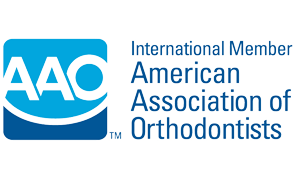You’re ready to get braces and start your journey to a healthy, beautiful smile, but you’ve hit a snag. Cavities. Can you get braces with cavities? What happens if you get cavities during braces treatment? Can you get clear aligners with cavities?
Good oral hygiene is a vital piece of orthodontic treatment. You need healthy teeth for braces treatment. But what happens if you have cavities or are prone to them? Smith & Davis Orthodontics offers solutions to help you combat tooth decay and achieve a healthy smile with braces.
 Can I Get Braces If I Have a Cavity?
Can I Get Braces If I Have a Cavity?
Once you’re ready to take the big step and start orthodontic treatment, it’s a good idea to visit your dentist first. You’ll want your teeth to have a good, professional cleaning and examination. This will be the opportunity to identify any issues before we begin your treatment with braces or clear aligners.
What if your dentist finds a cavity? Can you get braces with cavities? The best solution is to have your cavity filled before you get braces.
Why treat cavities before braces? Cavities weaken your tooth, and they will continue to damage your tooth until they are treated. Fillings replace the cavity with metal, ceramic, or resin, all of which will strengthen your tooth and keep them safe.
If you have a cavity, get it fixed before you start braces treatment. It will make your braces treatment easier and will prevent delays later.
What If I Get a Cavity With Braces?
What happens if you don’t fix the cavity, or if you discover the cavity after you get braces? We can continue to treat you, but there may be a delay while your cavity is fixed.
The length of the delay will depend significantly on the location of the cavity. If the cavity isn’t near a bracket or band, we may be able to reach it fairly easily without having to remove your brackets or bands.
Sometimes, we have to remove the archwire to make it easier for the dentist to fill the cavity. That’s usually an easy fix, since it’s something we do often to adjust your braces anyway. However, if we must remove brackets or bands to treat the cavity, that could slow your treatment time.
It means not only that you are going without the pressure from your braces moving your teeth, but also that we have to remove the bracket or band, then replace it and the archwire after your dental visit. Those events don’t all take place on the same day because some fillings can take up to 24 hours to set properly
This is why it’s important not only to treat cavities before braces treatment but also to maintain good oral hygiene so that you don’t get cavities during treatment.
Gum Disease With Braces
Having a healthy mouth is about more than just preventing cavities. You also brush and floss to prevent gum disease.
Gum disease is just as bad for braces as cavities. Your gums help hold your teeth in place. Gum disease can loosen this hold, and with your teeth moving already, it can cause your teeth to become loose. This could cause us to stop your treatment until your gum disease is treated and your gums are healed.
Gum disease can also cause your gums to bleed and become inflamed. With movement from braces, your gums could become very sore and swollen. Bleeding gums could become infected, which could further complicate your treatment. That’s why it’s vital to keep your gums healthy throughout your treatment through regular flossing and brushing.
 Preventing Cavities With Braces
Preventing Cavities With Braces
Maintaining oral hygiene is easy with clear aligners, such as Invisalign or 3M Clarity Advanced aligners. They can be removed, allowing you to brush and floss your teeth normally. It seems more complicated with braces, but the right tools can make it much easier.
A manual toothbrush is OK, but an electric toothbrush can make it easier to get around brackets and wires. Those with rotating heads can dislodge food particles around your brackets, which will clean your teeth more effectively than straight movements from a manual toothbrush.
What about flossing around all those wires and brackets? Start with a floss threader, which slides over or under the wires and through your teeth, pulling a piece of dental floss with it.
More Great Tools for Cleaning Braces
You can also use a proximal brush, which can slide through your teeth and around brackets and wires to scrub plaque away. A proximal brush is a small spiral brush with bendable bristles that will slide easily between your teeth.
Finally, some people prefer to use a Waterpik or other type of water flosser. While water flossers are great supplements to dental floss, they shouldn’t be a substitute. Even the best water flossers lack the scrubbing power you have with a piece of dental floss, and they can leave a thin layer of plaque on your teeth and braces. However, they’re great to use in between flossing to keep your teeth as clean as possible.
FAQs About Braces With Cavities
Can I get braces if I have cavities?
What if I get a cavity during braces?
Should I still see a dentist during braces treatment?
Braces Treatment in Rogers, AR
Cavities can complicate braces treatment, but they don’t have to prevent you from getting braces. With proper treatment of any cavities, your braces treatment can proceed as usual, and you can get that beautiful smile you’ve always wanted.
Are you ready for braces or clear aligners in Rogers, Arkansas? Schedule an appointment with Smith & Davis Orthodontics!








